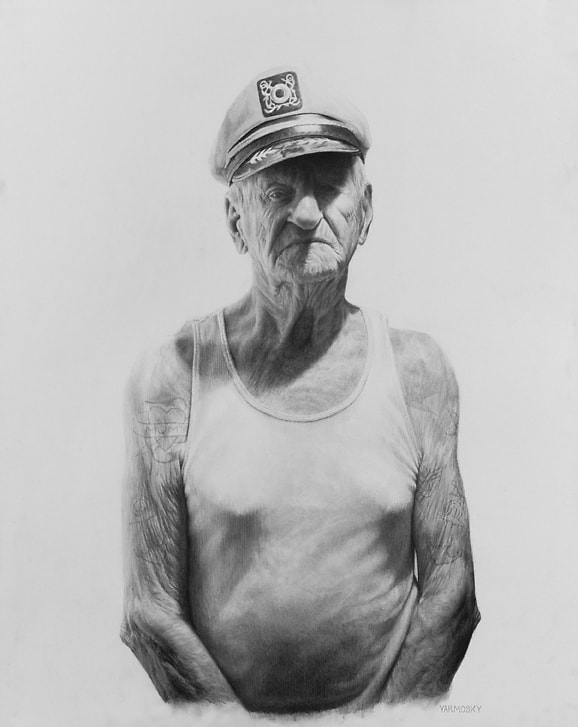Jason Bard Yarmosky, "Old Salt"
 I think it's fascinating that you have an exhibition about negative space here at the National Arts Club, just because there is so much art - so many portraits of well-known people - filling the walls, rooms, and even ceilings. In other words, there is no negative space.
I think it's fascinating that you have an exhibition about negative space here at the National Arts Club, just because there is so much art - so many portraits of well-known people - filling the walls, rooms, and even ceilings. In other words, there is no negative space.
RB:
Every artist here is extremely technically competent, but working in a very progressive, kind of avant-garde idea, in that we're removing most of what you're looking at. Obviously, some [pieces] are not as much removed - and we want to show that breadth - but I really gravitate towards and love the dichotomy of doing a progressive show at a very storied and historical venue.
And even those portraits in the show that don't use subtraction are still quite a contrast from those outside of the galleries. What are some examples along this spectrum of negative space?
JM:
Jason Bard Yarmofsky's work [to the left] has the idea that the man is in the void. There is no background. So opposed to Ryan's piece, for instance, instead of taking away from [a canvas], this [piece] provides no background.
Adam Kreuger's work [as seen in the first slide] is, I think, the most specific [example] of the idea of cutting away. Because there literally isn't anything there. This work is mounted, so the canvas itself is [laid] on top of [a mounting].
Jason Bard Yarmosky
Old Salt, 2012
Graphite on Paper
[Photo via]